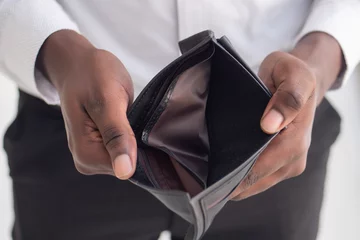Although crypto has created many millionaires and billionaires, not everyone has been fortunate.
There are numerous individuals who never made it. Some lost their life savings, others made thousands only to lose it all, and some made millions with meme coins but never sold until the market collapsed.
I could elaborate on how people lost their money, but in this article, we’ll explore why they lost and the mistakes they made so that you won’t make the same ones.
Given that I’ve made many of these mistakes myself, I feel well-positioned to explain them to you.
Why Many People Fail in Crypto:
- Not Thinking Long Term:
This affected me the most when I lost a substantial amount of my crypto investment in the previous market cycle. I was shortsighted, selling all my Ethereum and Bitcoin at the market’s bottom in late 2018.
I’m not suggesting you shouldn’t take profit, but avoid selling all your holdings expecting to buy back at a better price. Always retain a portion because being in the market is more significant than timing it.
Those who struggle with long-term thinking often find it hard to hold onto promising coins and projects. Despite conducting thorough research and investing, they often sell before the price surges. They miss out on gains due to their shortsightedness.
If this happens frequently, perhaps you’re thinking too short term. Try to envision the long term—think in periods of 3 months, 6 months, 1 year, or more, and exercise patience. If you’ve invested in good projects, ‘HODLing’ is your best friend.
- Not Having a Goal or Crypto Plan:
Many people found themselves in crypto, and made money, but lost it all because they lacked a goal or plan for the money. They didn’t know what to do with it. I, for instance, lost a significant portion due to various businesses, new crypto projects, and more.
From my experience, establish the following goals:
- An amount to save in cash
- An amount in stable crypto
- An amount for family and charitable giving
- An amount for business investment
- An amount for personal expenses
- Also, maintain a monthly budget.
Once you’ve set your goals, review them regularly to remind yourself how to manage your funds once you earn them.
- Shiny Object Syndrome:
This involves constantly seeking the next best investment. While this isn’t entirely negative, understand that there will always be top-ranking cryptocurrencies in each category, and in the long run, holding onto them is better.
Also, avoid investing a large portion of your capital into the next ‘big thing’. Instead, risk what you can afford to lose, to avoid substantial losses.
Again, no matter how tempting it is to invest in new trends like NFTs, Web3, DeFi, etc., ensure you only invest a small portion of your capital.
- Distraction:
While diversifying investments isn’t wrong, understand that in recent years, only a few investments outperformed crypto. If you’ve profited from crypto investments in a bull market, during a bear market, it’s wise to keep cash in stable assets for the next crypto cycle. Investing in new businesses might lead to a loss of your capital and could leave you with no funds for crypto investments.
I invested in agriculture, where unforeseen challenges led to a significant capital loss that could have been better utilized in crypto. I’ve learned my lesson and now opt to partner with existing businesses or invest a small portion I’m willing to lose instead of starting new ventures.
- Not doing your own research:
Failing to conduct your own research using available tools like Coinmarketcap.com, Dapp radar, Block Explorer, etc., can lead to investing in the wrong projects. You might end up investing a large amount in projects that continually decrease in price or in projects with nowhere to sell (known as honeypot projects).
Neglecting personal research alone could lead you to invest in scam projects, resulting in the loss of funds to scammers.
Additionally, it might prompt you to FOMO (fear of missing out) into promising projects at the wrong time. For example, if a friend suggests buying a particular crypto and without checking the chart, you rush in only to see the price drop further. This leads to buying when you should have been selling.
- No income:






Thank you sir, I really appreciate you
Concerning airdrops, I will really wish you keep shearing them too in the forum, for some of our benefit,
Thank you, God bless ur good work sir
You’re welcome.
Thank you for the feedback.
We will put in more effort in the area of airdrops.
Joy is coming for all of us.